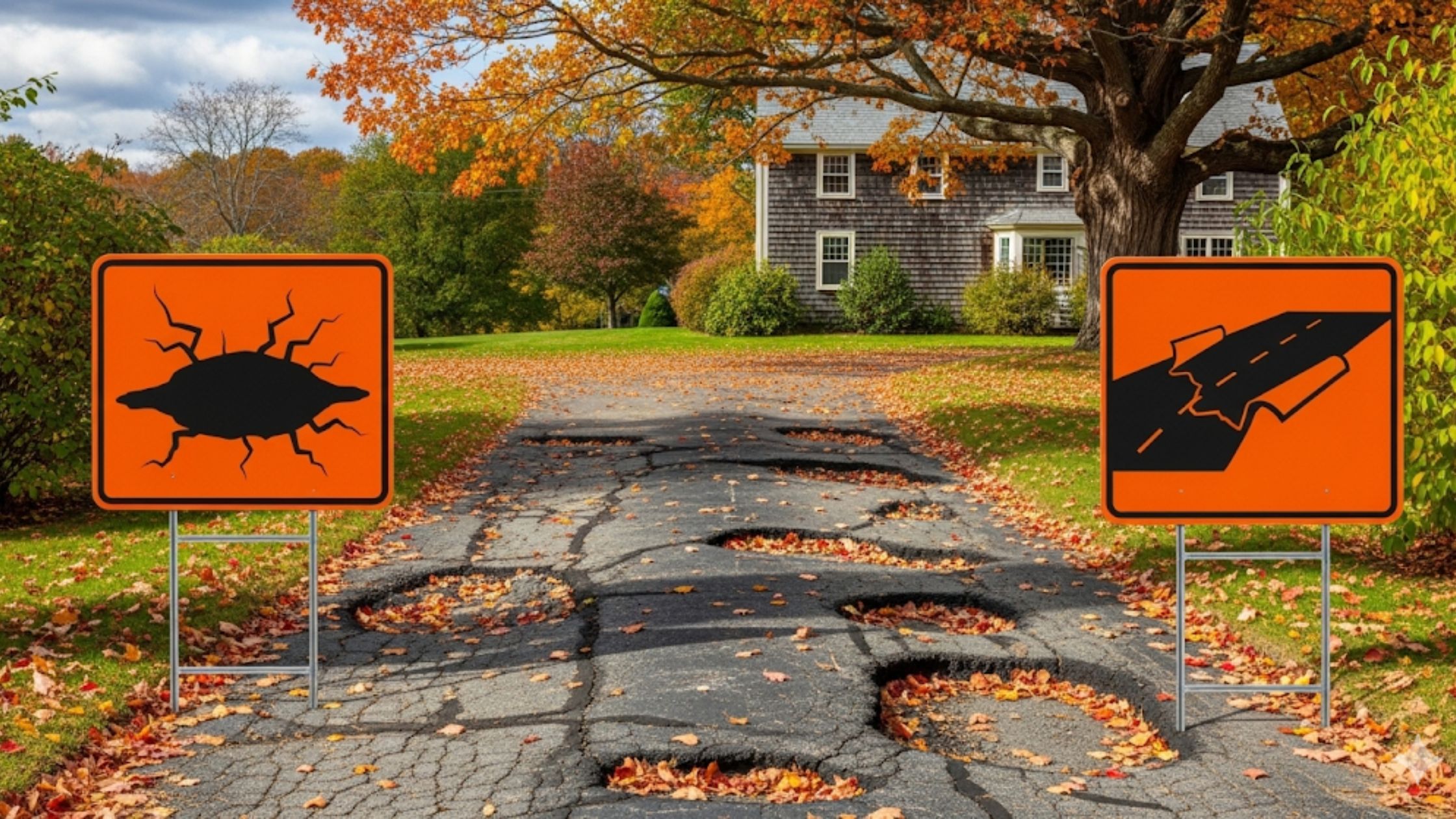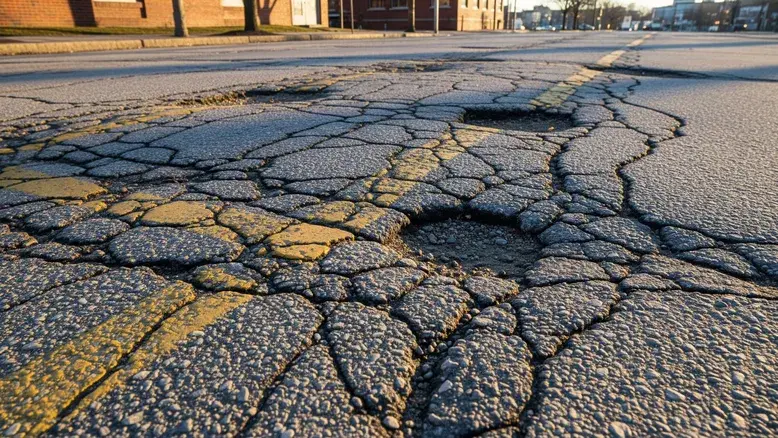Asphalt pavements are an essential part of Massachusetts infrastructure, spanning driveways, parking lots, and local roadways. Over time, weather fluctuations, traffic stress, and subgrade issues lead to the formation of cracks that compromise structural integrity and curb appeal. Addressing these fissures promptly helps prevent moisture infiltration, further deterioration, and costly repairs.
Property managers and homeowners in Massachusetts often turn to local experts like The SealCoating Guys for comprehensive asphalt crack assessment and durable sealcoating solutions. These specialists understand the nuances of New England’s climate and offer tailored maintenance plans that extend pavement lifespan.
This blog delves into the most common asphalt crack types, their underlying causes—ranging from freeze-thaw cycles to poor drainage—and effective repair strategies. It also highlights Massachusetts-specific pavement challenges and guides readers toward selecting the right repair services.
Overview of Asphalt Cracks in Massachusetts
Massachusetts experiences significant temperature swings, frequent freeze-thaw cycles, and heavy precipitation. These conditions accelerate asphalt aging by inducing expansion, contraction, and moisture penetration. In urban areas, constant traffic compounds these stresses, leading to cracks that vary in pattern and severity.
Understanding how cracks manifest is the first step to effective pavement management. Cracks are not merely cosmetic flaws; they signal potential subgrade failure, poor compaction during installation, or oxidation from UV exposure. Early identification and targeted intervention can save thousands in future repair costs.
Local climate factors such as snowmelt salts and rainwater accumulation around edges or low spots exacerbate pavement distress. High-traffic corridors in Boston, Springfield, and Worcester often exhibit distinctive cracking patterns attributable to load repetition and subgrade movement.
Types of Asphalt Cracks
Asphalt cracks come in various forms, each indicating different underlying issues. Recognizing the patterns helps property owners and contractors determine the correct repair technique and assess urgency.
Alligator (Fatigue) Cracking
Alligator cracking, also known as fatigue cracking, forms interconnected networks of small blocks resembling an alligator’s skin. This pattern indicates structural failure in the base or subbase, often due to repeated heavy loads or saturated subgrade layers. Alligator cracks require full-depth patching to restore pavement support and prevent pothole development.
Block Cracking
Block cracking appears as large, rectangular segments across the pavement surface. It typically results from asphalt binder aging and shrinkage caused by extreme temperature variations. Unlike fatigue cracks, block cracking is not load-related but can accelerate moisture ingress. Small block cracks under ½ inch can be sealed, while extensive networks often need an overlay or milling and resurfacing.
Longitudinal Cracking
Longitudinal cracks run parallel to the pavement centerline or along lane joints. They stem from poor joint construction, asphalt shrinkage, or reflective cracking from an underlying concrete surface. Proper compaction during installation and joint sealing are critical to prevent these linear fissures.
Transverse Cracking
Transverse cracks cut across the pavement perpendicular to the centerline. Commonly caused by thermal contraction in cold weather, they may also reflect subgrade movement or repetitive traffic stresses. Routing and sealing with flexible sealants is effective for cracks under ½ inch, while deeper fissures often warrant overlay applications.
Edge Cracking
Edge cracks occur within a few feet of pavement edges, triggered by lack of lateral support, poor drainage, soil settlement, or vegetation encroachment. Water accumulation at edges weakens the base, leading to longitudinal fissures. Reinforcing edges with proper subbase support and improving drainage can mitigate future cracking.
Primary Causes of Pavement Cracks
Freeze-Thaw Cycles
In Massachusetts, pavement experiences frequent freeze-thaw cycles. Water that infiltrates tiny surface openings freezes, expands, and forces cracks to widen. Repeated cycles accelerate deterioration, leading to transverse and block cracks.
Heavy Traffic Loads
High volumes of traffic—especially heavy trucks—impose repeated stress on asphalt, causing fatigue over time. Areas under constant loading, such as commercial driveways or industrial yards, often develop alligator cracks first.
Poor Material Selection and Installation
Low-quality asphalt mixes, inadequate compaction, and insufficient binder content weaken pavement structure from day one. These installation flaws manifest as early cracking, potholes, and raveling.
Inadequate Drainage
Water pooling on the pavement surface or seeping through edges saturates the base layer, undermining support. Properly designed crowns, storm drains, and sealed joints help control surface runoff and extend pavement life.
Oxidation and Aging
Asphalt binder oxidizes when exposed to oxygen and UV rays, becoming brittle and prone to cracking. Sealcoating acts as a protective layer that slows oxidation and helps maintain pavement flexibility.
Massachusetts-Specific Pavement Issues
Massachusetts’ older road networks and harsh winters create distinct pavement challenges:
- Urban Salt Damage: De-icing salts corrode asphalt binder, leading to surface weakening.
- Historic Pavement Layers: Some roadways in Boston and Cambridge retain multiple overlays over aged bases, making them more susceptible to reflective cracking.
- Municipal Budget Constraints: Limited funding for preventive maintenance in smaller towns often delays crack sealing, accelerating deterioration.
Municipal and private properties alike must balance repair costs against long-term benefits of preventive maintenance. Addressing small cracks promptly can prevent full-depth failures that cost significantly more to remediate.
Impact of Unaddressed Cracks
Ignoring small cracks invites water infiltration, base erosion, and eventual pothole formation. Cracked pavements pose safety hazards to vehicles and pedestrians, reduce property values, and increase liability risks for property owners.
Prolonged neglect can lead to base failure, requiring full-depth reconstruction rather than simple surface treatments. Early intervention—through crack sealing and filling—preserves pavement integrity and postpones costly resurfacing projects.
Repair and Maintenance Options
Crack Sealing
Crack sealing involves cleaning the fissure and applying a rubberized sealant that accommodates pavement movement. This method prevents moisture entry and extends pavement life, particularly in working cracks that expand and contract.
Property owners may refer to The Essential Guide to Asphalt Crack Filling in Massachusetts for detailed instructions on selecting appropriate materials and methods.
Crack Filling
Crack filling uses cold or hot pour materials for non-working cracks. Fillers create a barrier against water and debris without the flexibility of sealants. Ideal for stable cracks up to ½ inch, this approach is budget-friendly and straightforward.
Resurfacing and Overlays
For widespread cracking or aged pavements, an asphalt overlay provides a new wearing surface. Thin-lift overlays (1–2 inches) can correct minor distresses, while thicker overlays (2–3 inches) address deeper cracks and rutting.
Full-Depth Patching
When base layers are compromised—evidenced by alligator cracking—a full-depth patch replaces the damaged zone entirely. This restores structural support but is more labor-intensive and costly than surface repairs.
Choosing the Right Service Provider
When evaluating providers for concrete crack filler service in Massachusetts, customers should look for licensed contractors with proven experience in freeze-thaw conditions of New England. A reputable service will offer:
- Site inspections and transparent estimates
- Use of premium sealants and fillers
- Lifetime or multi-year warranties on workmanship
- References and portfolio of local projects
Proper contractor selection ensures repairs comply with ASTM standards and withstand the rigors of Massachusetts climate.
Preventive Measures and Maintenance Strategies
Consistent preventive maintenance is paramount:
- Schedule crack inspections biannually, in spring and fall
- Remove vegetation and debris from cracks before sealing
- Apply sealcoat every 2–3 years to replenish asphalt binder
- Ensure proper stormwater management around pavement edges
- Monitor traffic patterns and restrict heavy loads when possible
These strategies reduce oxidation, block moisture, and maintain pavement flexibility, saving money over the pavement lifecycle.
Conclusion
Asphalt cracking in Massachusetts results from a combination of climate stressors, traffic loads, and installation deficiencies. Identifying crack types—from alligator to edge fissures—and understanding their causes empowers property owners to implement targeted repairs.
Timely crack sealing, filling, and preventive maintenance can extend pavement life by years, avoiding the expense of full-depth reconstruction. Selecting qualified contractors for concrete crack filler service in Massachusetts and leveraging expert guidance ensures durable, cost-effective solutions.
For comprehensive pavement care tailored to Massachusetts conditions, trust the expertise of The SealCoating Guys. We provide precise crack repair and protective sealcoating to keep your asphalt surfaces resilient and attractive.
Frequently Asked Questions
Q1: What are the different types of asphalt cracks?
Common asphalt cracks include alligator (fatigue) cracking, block cracking, longitudinal and transverse cracks, slippage cracks, edge cracking, and reflective cracking. Each type has distinct causes and repair methods.
Q2: What causes pavement cracks in Massachusetts?
Major causes include freeze-thaw cycles, heavy traffic loads, poor installation, inadequate drainage, and binder oxidation due to UV exposure.
Q3: Why is it important to repair small cracks in asphalt surfaces?
Fixing small cracks prevents water infiltration, base erosion, and pothole formation. Early repairs extend pavement life and reduce overall maintenance costs.
Q4: How can asphalt cracking be prevented in cold climates like Massachusetts?
Preventive measures include biannual inspections, crack sealant applications, sealcoating every few years, proper drainage design, and controlling heavy traffic loads.
Q5: What is involved in a concrete crack repair or concrete crack filler service?
A professional service includes inspecting cracks, cleaning and preparing the fissures, applying suitable fillers or sealants, and recommending ongoing maintenance to ensure lasting results.






.webp)

.svg)



